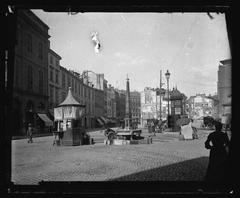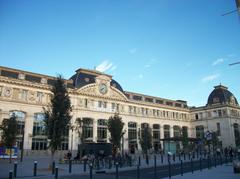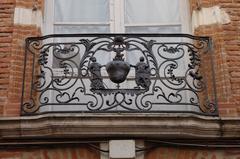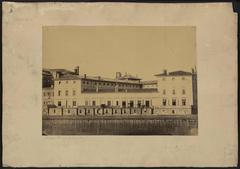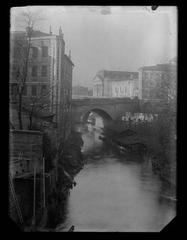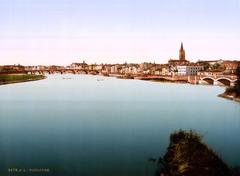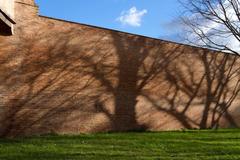Chemin De La Garonne Toulouse: Visiting Hours, Tickets, and Historical Sites Guide
Date: 03/07/2025
Introduction
Chemin De La Garonne is a picturesque riverside path weaving through the heart of Toulouse, France. Hugging the banks of the iconic Garonne River, this historic promenade offers a seamless blend of natural splendor, architectural marvels, and vibrant cultural life. Whether you’re a history buff, a nature enthusiast, or simply seeking a serene stroll, Chemin De La Garonne is an essential Toulouse experience. This comprehensive guide covers its storied history, practical visitor information, access tips, and the best ways to enjoy this unique urban oasis.
Historical Background and Significance
Ancient Origins and Urban Evolution
Chemin De La Garonne traces its roots to the earliest days of Toulouse, with evidence of riverside settlements dating back to the 3rd century BCE. The Garonne River has long been Toulouse’s lifeline, serving as a vital trade and transport artery connecting the Pyrenees, the Mediterranean, and the Atlantic. In medieval times, the riverbanks hosted bustling ports, watermills like the Bazacle, and ferry crossings linking neighborhoods and outlying villages (Visit Occitanie; Cahier Nomade).
Through the centuries, the route has adapted to urban growth and modernization, including the construction of bridges and flood defenses in the 19th century. In 1947, it was officially named “Chemin de la Garonne,” cementing its place in the city’s geography and collective memory.
Cultural and Architectural Highlights
Chemin De La Garonne is renowned for its panoramic views of Toulouse’s signature pink-brick architecture—earning the city the nickname “La Ville Rose.” Strolling along the river, visitors encounter:
- Pont Neuf: The oldest bridge in Toulouse, built in 1632, symbolizing the city’s resilience (The Crazy Tourist).
- Dôme de la Grave: An 18th-century hospital dome, a favorite subject for photographers.
- Hôtel-Dieu Saint-Jacques: A UNESCO World Heritage site and historic stop for pilgrims.
The riverside is also the setting for local festivals such as Convivencia, open-air concerts, and seasonal celebrations, reflecting Toulouse’s dynamic urban culture (Petit Futé).
Natural Environment and Biodiversity
The Garonne’s banks are a green haven, shaded by plane trees and willows, and home to diverse birdlife including herons and kingfishers. Environmental initiatives like “Ici commence la Garonne” emphasize river stewardship and sustainability (Cahier Nomade).
Visiting Chemin De La Garonne: Practical Information
Opening Hours and Entry
- Access: The Chemin De La Garonne is open year-round, 24/7, and free to the public. No tickets are required.
- Best Times to Visit: Spring (April–June) and autumn (September–October) offer mild weather and lively events, while summer brings festivals and extended daylight (Best Time To; Where and When). Sunrise and sunset provide especially beautiful views of the river and cityscape.
Getting There
- Public Transport: Accessible by metro (Lines A and B), bus (lines 70, L1, 132, 66, T1, T1P, 31P, 46), and tram. Nearest stops include Marly, Lully, Sept Deniers - Salvador Dali, Cauterets, and Ancely (Moovit).
- Cycling and Walking: The path is part of the larger Via Garona (GR861) and connects with the Canal des Deux Mers network (Lio Occitanie; Taste of Toulouse). VélôToulouse bike rentals are widely available.
Accessibility
- Wheelchair and Stroller Access: The main riverside promenade is paved and accessible, though some sections may have uneven surfaces (Taste of Toulouse).
- Facilities: Public restrooms, water fountains, benches, and green spaces are available near major parks, such as Prairie des Filtres.
Top Activities and Attractions
Riverside Walks and Cycling
The Chemin De La Garonne is ideal for leisurely walks, jogging, and cycling. The route passes by iconic sites such as Pont Neuf, Dôme de la Grave, and Hôtel-Dieu Saint-Jacques, offering ample opportunities for sightseeing and photography (MonNuage).
Outdoor Sports
While swimming in the Garonne is prohibited, kayaking, canoeing, and stand-up paddleboarding are popular activities in summer, with rentals and lessons available from local clubs (Lost in Bordeaux).
Cultural Events and Festivals
- Convivencia Festival: Concerts and performances on a floating stage celebrate the region’s multicultural spirit.
- Toulouse Plages: Summer brings open-air sports, family activities, and pop-up guinguettes along the banks.
- Bastille Day Fireworks: The riverbanks become a gathering spot for Toulouse’s spectacular July 14th fireworks (Toulouse Secret).
Dining and Local Cuisine
Riverside cafés, bistros, and seasonal food stalls offer local specialties like cassoulet and regional wines. Open-air guinguettes are a summer highlight (Lost in Bordeaux).
Family-Friendly Activities
Parks such as Prairie des Filtres and Jardin Raymond VI provide playgrounds, picnic areas, and space for children to play. Summer festivals often include dedicated children’s zones (Toulouse Secret).
Travel Tips and Visitor Etiquette
- What to Bring: Comfortable shoes, water, sun protection, picnic supplies, and a camera.
- Safety: The area is generally safe; avoid isolated or unlit sections after dark.
- Cyclist and Pedestrian Courtesy: Keep to the right and respect shared paths.
- Cleanliness: Dispose of litter responsibly and respect the riverside environment.
Frequently Asked Questions (FAQs)
Q: What are the opening hours of Chemin De La Garonne?
A: Open 24/7, year-round, with free access.
Q: Are tickets required?
A: No, the promenade is public and free to visit.
Q: Is Chemin De La Garonne wheelchair accessible?
A: Yes, most of the main promenade is accessible; some older sections may be uneven.
Q: Can I rent bikes nearby?
A: Yes, VélôToulouse bike rentals are widely available.
Q: Are guided tours offered?
A: Yes, especially in summer. City tours and specialized guides are available (Petit Futé).
Q: Are there restrooms and food options nearby?
A: Yes, facilities and numerous cafés are located along the riverbanks.
Q: Is swimming allowed in the Garonne?
A: No, swimming is prohibited for safety reasons.
How to Get the Most from Your Visit
- Arrive in the late afternoon or early evening to enjoy sunset views and social gatherings.
- Check Toulouse’s official event calendar for festivals and concerts.
- Download the Moovit app for real-time transport info (Moovit).
- Explore nearby attractions such as the Basilica of Saint-Sernin and Place du Capitole.
- Consider a boat tour for a fresh perspective on Toulouse’s riverfront.
Summary
The Chemin De La Garonne is a testament to Toulouse’s enduring relationship with its river—past and present. Open year-round, free, and easily accessible, it offers a harmonious blend of natural beauty, historical landmarks, lively events, and local hospitality. Whether you’re seeking panoramic city views, vibrant festivals, or a tranquil place to unwind, this riverside path is an essential addition to any Toulouse itinerary.
For more travel tips and up-to-date event listings, visit the official Toulouse tourism website, download the Audiala app, and follow us on social media for insider recommendations.
References
- Visit Occitanie: Discover Toulouse along the Banks of the Garonne
- Cahier Nomade: Toulouse Riverside Walk
- The Crazy Tourist: Best Things to Do in Toulouse
- Petit Futé: Toulouse City Guide
- Moovit: Chemin De La Garonne Public Transport
- Lio Occitanie: Via Garona Hiking Route
- Taste of Toulouse: Getting Around Toulouse
- Toulouse Tourisme: Official Tourism Website





